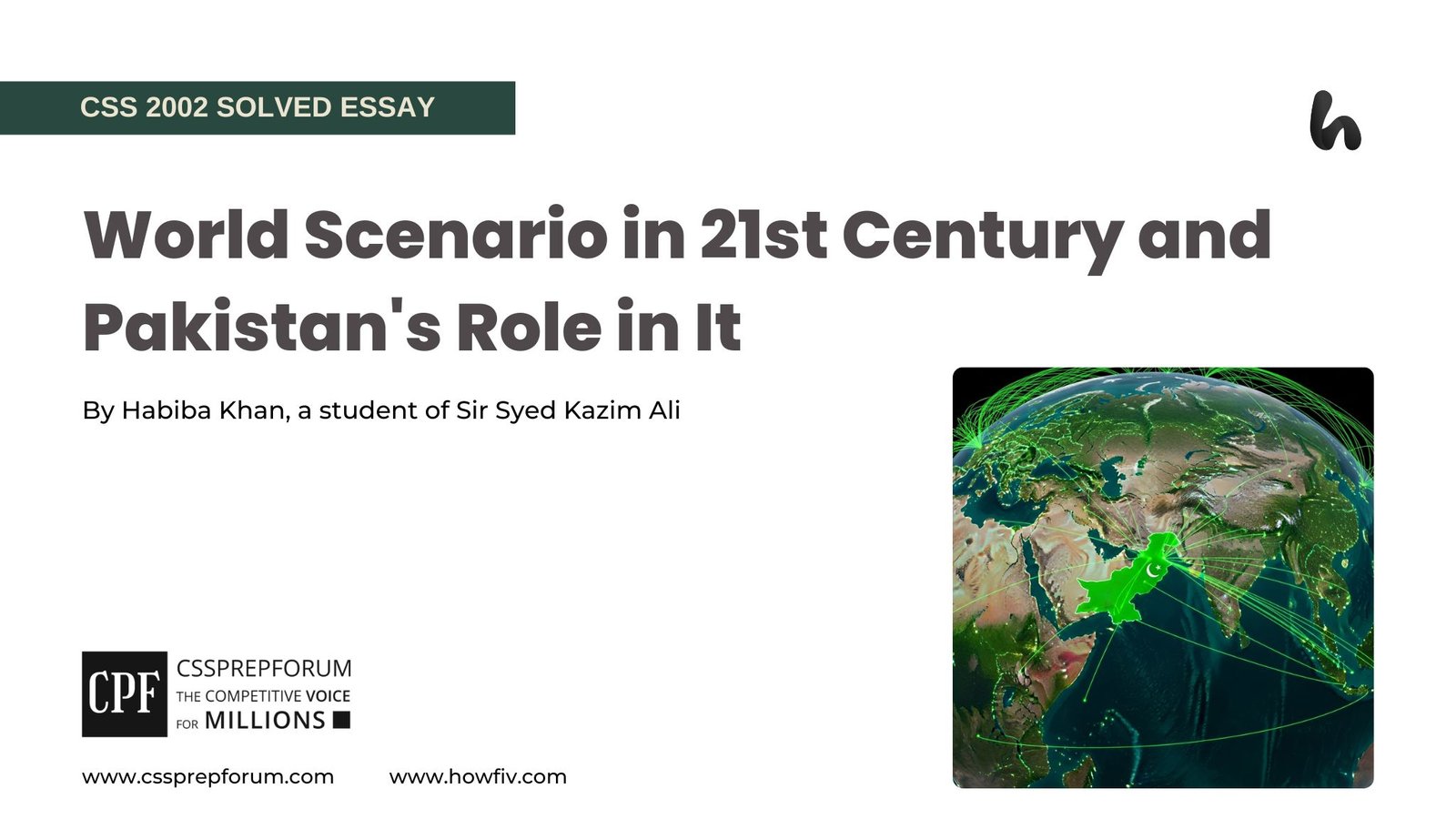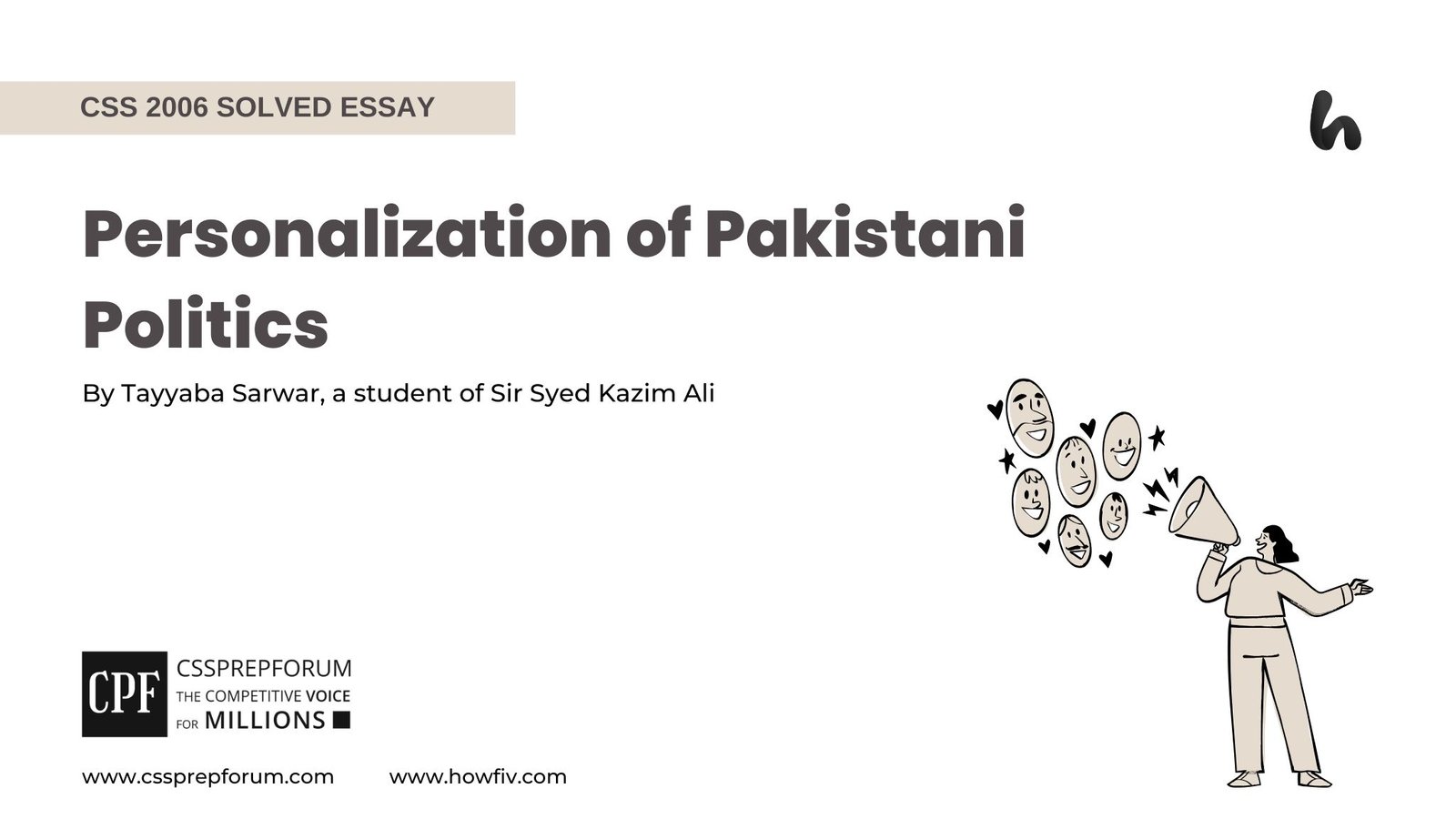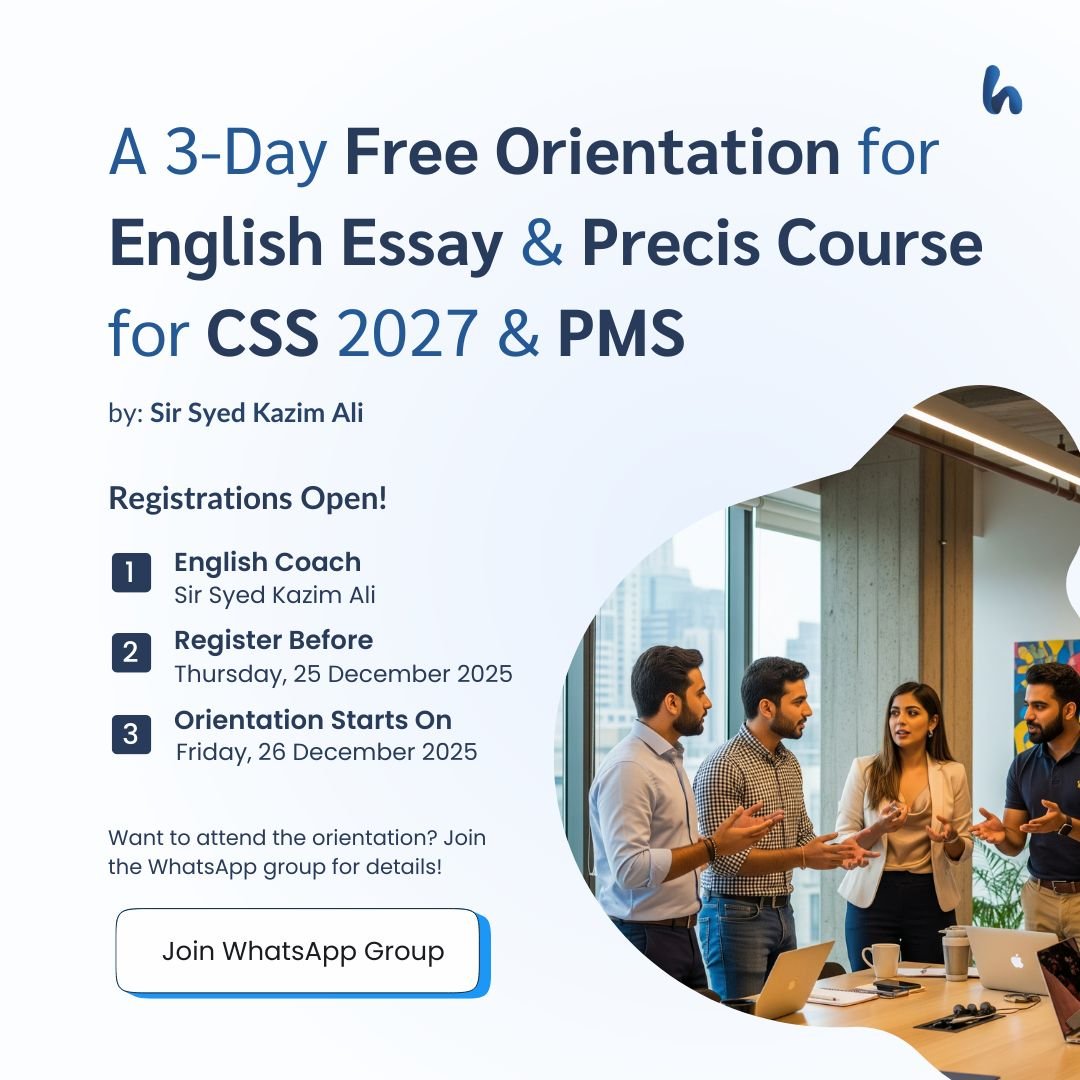Struggling to score well in the Islamiat paper despite reading everything? You’re not alone. The key to success lies not in studying more, but in studying smart. This comprehensive blog breaks down the essential strategies and techniques that will help you elevate your performance and secure top marks.

The Islamiat paper in CSS and PMS examinations is often considered a scoring opportunity by aspirants, yet many fall short of expectations. The reason lies not in the subject’s complexity but in how candidates prepare for and approach it. Islamiat today is no longer just about narrating Islamic history or quoting verses; it is a rigorous academic exercise that tests one’s conceptual understanding, analytical ability, and strategic expression. Scoring high requires more than rote learning; it demands a thoughtful blend of religious knowledge, critical reasoning, and clear, structured presentation.
To meet the evolving demands of this paper, candidates must adopt a holistic approach, one that covers core Islamic concepts, applies them to contemporary contexts, and presents them in an engaging and examiner-friendly format. This article explores key strategies to help aspirants secure top marks in Islamiat by mastering its intellectual and practical dimensions.
1- Developing a Strong Conceptual Foundation: The Bedrock of High Scores
First of all, the cornerstone of success in Islamiat lies in a deep and coherent understanding of Islamic teachings and principles. Candidates must move beyond memorizing definitions and instead aim to grasp the philosophy, purpose, and practicality of Islamic laws, ethics, and governance.
Take, for example, the concept of Tawheed (Monotheism). Instead of simply stating it as belief in one God, a top-performing candidate would explore how Tawheed establishes equality among humans, negates the concept of divine right of kings, and lays the ideological foundation for Islamic social justice. They may link it to contemporary secular ideas of universal equality and dignity.
Similarly, when discussing Zakat, an average student may just define it as a form of charity. However, an insightful answer would elaborate on how Zakat ensures wealth redistribution, curbs economic inequality, and fosters a balanced socio-economic order. Candidates may even cite modern-day economic issues, such as income inequality, and argue that Islamic fiscal systems offer solutions where modern capitalism falls short.
Building this kind of conceptual depth requires engagement with diverse sources, including translations and tafsirs of the Quran, books by contemporary scholars, such as Abul A’la Maududi, Dr. Israr Ahmed, and Muhammad Asad, as well as understanding the historical context of Islamic injunctions.
2- The Importance of Quranic Ayahs, Hadith, and Scholarly References
Moreover, what sets a high-scoring answer apart is the intelligent and relevant incorporation of Quranic verses, Hadith, and quotes from renowned scholars. These references act as the backbone of the argument, lending theological and intellectual authority to the response.
However, the mere mention of a verse or Hadith isn’t enough. Its context and application are what give the reference power. For example,
- When writing on justice in Islam, instead of just quoting,
“Indeed, Allah commands justice, and the doing of good…” (Surah An-Nahl 16:90),
The student should explain how this verse underpins Islamic governance and judicial systems, and how it can be used to critique modern-day authoritarianism or legal discrimination. - A Hadith like
“The best among you are those who are best to their women” (Tirmidhi),
shouldn’t be quoted in isolation. It should be tied to a discussion on women’s rights, education, inheritance laws, and the social reforms introduced by Islam in 7th-century Arabia, compared to the condition of women at the time.
Likewise, incorporating scholarly references like
- Imam Al-Ghazali on the ethics of governance,
- Ibn Khaldun on the cyclical theory of history,
- Maulana Maududi on Islamic revivalism,
shows the examiner that the candidate has engaged with a rich intellectual tradition, not just surface-level content.
3- The Role of Critical Analysis: From Memorization to Intellectual Engagement
Furthermore, gone are the days when examiners rewarded lengthy, descriptive answers. The Islamiat paper now expects students to demonstrate critical engagement, to analyze, compare, and evaluate.
Let’s consider a question like
“Discuss the rights of minorities in Islam.”
A basic answer might list verses encouraging tolerance or examples of the Prophet Muhammad (PBUH) signing treaties with non-Muslims. While accurate, such an answer lacks critical depth.
A high-level response, however, would
- Start with the foundational principle of “No compulsion in religion” (Surah Al-Baqarah 2:256),
- Discuss the Charter of Madinah as the world’s first pluralistic constitution.
- Critically compare Islamic protection of minorities with modern secular approaches, highlighting how Islam guaranteed autonomy, religious freedom, and judicial rights without forced assimilation.
They might even reflect on how modern Muslim states have deviated from these ideals and suggest ways to reconcile Islamic principles with international human rights frameworks.
This level of thinking shows maturity and analytical skill, key ingredients for scoring high.
4- Enhancing Answers with Visual Aids: The Examiner’s Delight
Instead of these, in a paper where hundreds of students may write on the same topic, presentation becomes the ultimate differentiator. Visual elements, such as diagrams, tables, flowcharts, and bullet points, enhance clarity, break up the monotony of text, and help examiners quickly grasp key ideas. For instance,
- A flowchart explaining the process of Ijtihad can visually map out how scholars derive rulings from the Quran and Sunnah, using principles such as Qiyas, Maslahah, and Urf.
- A mind map showing the branches of Islamic governance – such as shura (consultation), khilafah (leadership), accountability, and the rule of law – can condense complex systems into an accessible format.
- A comparative table that contrasts Islamic and Western legal systems in areas such as property rights, social responsibility, or punishment theory can leave a powerful impression.
Even questions like “Write a note on the causes of the decline of the Muslim Ummah” can be enhanced with a spider diagram showing multiple causes, such as intellectual stagnation, sectarianism, the colonial legacy, and poor leadership, followed by proposed Islamic solutions. Thus, these tools not only improve readability but demonstrate that the candidate has internalised the subject well enough to represent it structurally.
5- Bridging the Gap Between Classical Teachings and Contemporary Issues
One of the most critical skills in Islamiat is the ability to contextualise Islamic teachings in today’s world. The examiners are no longer interested in historical accounts alone; they want to see whether a candidate understands how Islam addresses modern challenges, such as climate change, economic disparity, social justice, women’s empowerment, political corruption, digital ethics, and more. For example,
- When discussing economic principles in Islam, go beyond Zakat and Riba. Mention Islamic banking, the rise of Sukuk (Islamic bonds), and how interest-free microfinance is helping rural communities in Pakistan and Sudan.
- In an answer on Islam and democracy, reference how the concept of Shura (consultation) mirrors democratic values. You can cite examples from the Rashidun Caliphate, where leaders were selected through consensus and were held accountable, concepts modern states are still struggling to perfect.
- On women in Islam, don’t stop at inheritance and education. Explore how early Muslim women, such as Hazrat Ayesha (RA) and Hazrat Khadija (RA), shaped religious, political, and commercial life, offering a powerful counter-narrative to the perception of women’s passivity.
Hence, this type of relevance signals higher-order thinking and sets top scorers apart.
6- Practising Structured, Time-Bound Writing
Moreover, one of the most common mistakes aspirants make is not practising writing full answers under exam conditions. A well-thought-out answer that is poorly structured, overly long, or incomplete will not fetch high marks. Candidates should aim to follow a coherent structure explained hereunder.
- Introduction: Define the topic, explain its relevance, and outline the structure.
- Main Body: Divide into 3–5 clearly marked headings. Use evidence, analysis, and subheadings.
- References: Integrate Quran, Hadith, scholars, and modern examples.
- Conclusion: Summarize and offer critical insight or a contemporary linkage.
For example, when writing about the “Islamic Moral System”, start by defining akhlaq, then explore different dimensions – individual, social, economic, and political morality – backed by references. Finish by showing how Islam’s moral values offer solutions to modern ethical crises like corporate greed, political corruption, or environmental negligence.
7- Resource Diversification: Read Beyond the Textbook
Going down to the ladder, relying solely on textbooks or academic notes, will not produce distinction-level answers. Top scorers read from a variety of sources, including Quran translations with tafsir, academic lectures, research articles, and works by classical and modern scholars, to develop a multidimensional understanding. And recommended resources include
- Tafsir Ibn Kathir or Tafheem-ul-Quran (for verse understanding)
- Maulana Maududi and Dr. Hamidullah (for Islamic governance and law)
- Karen Armstrong or Muhammad Asad (for historical insights and Western perspectives)
- YouTube channels or podcasts by authentic scholars like Dr. Israr Ahmad for conceptual clarity
Mastering Islamiat the Right Way
In a nutshell, scoring high in Islamiat is not reserved for a few gifted candidates; it is a strategic skill anyone can acquire. Those who understand the subject as a living, breathing system of thought, not just a set of memorised facts, are the ones who shine. To summarize, securing top marks requires
1-Conceptual clarity over memorization
2-Thoughtful integration of Quran and Hadith
3-Analytical responses that relate to modern contexts
4-Smart use of diagrams and visual aids
5-Regular practice of structured writing
6-Engagement with diverse and authentic resources
In short, Islamiat is no longer just a religious paper; it is a test of intellectual maturity, creativity, and vision. And those who prepare accordingly have every reason to expect not just success, but distinction.

Who is Miss Ayesha Irfan?
Miss Ayesha Irfan is a distinguished, competitive teacher renowned for his expertise in preparing candidates for Pakistan’s Central Superior Services (CSS) and Provincial Management Services (PMS) examinations. As a CSS qualifier on her first attempt, she brings a unique analytical approach to her teaching. Specializing in Islamiat, Miss Ayesha has meticulously solved all past papers from 2010 to date – a pioneering effort that sets her apart in the field. Her comprehensive teaching methodology, which includes detailed concept explanations, real-time practice assignments, and extensive weekly evaluations, has resulted in the highest success rate of her students. This dedication has made her the most sought-after teacher for CSS and PMS preparation, with many attributing their success to his guidance.












